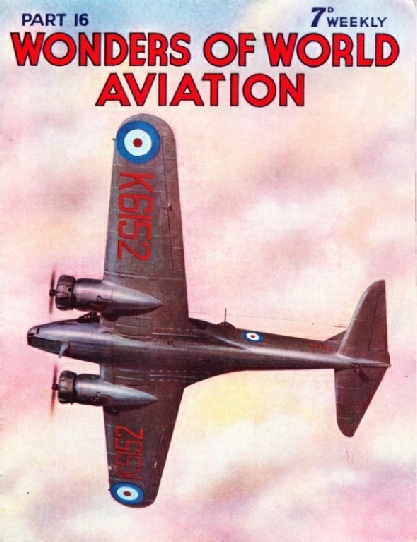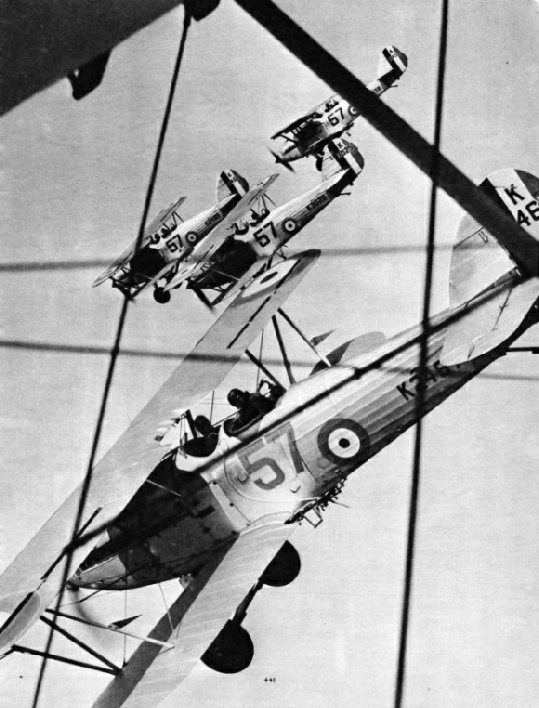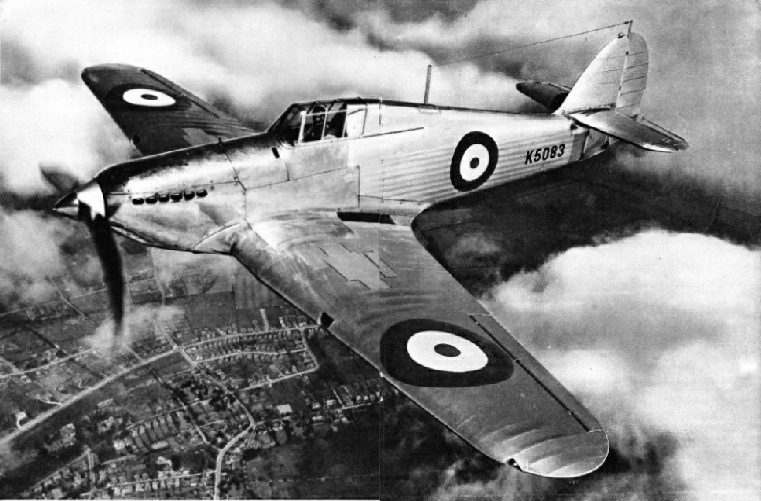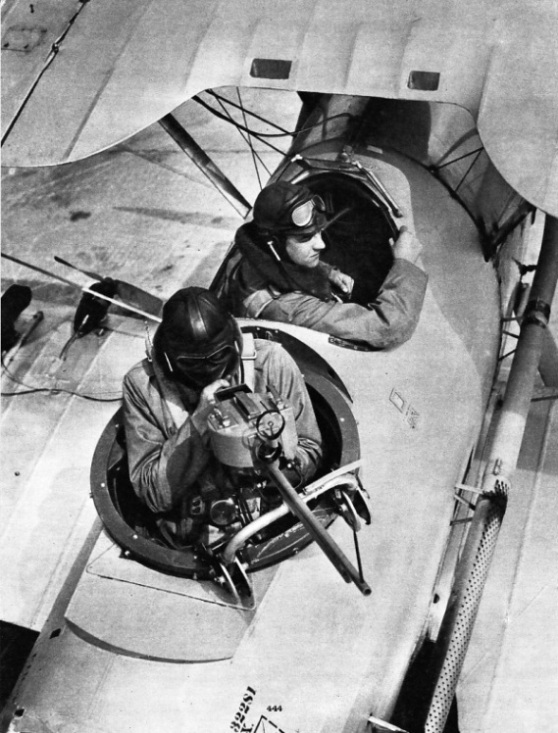
© Wonders of World Aviation 2015-


Part 16
Part 16 of Wonders of World Aviation was published on Tuesday 21st June 1938, price 7d.
This part included a central photogravure supplement showing fighter aircraft. This section illustrates the article on Fighter Design.
The Cover
The subject of our cover picture this week is the Avro Anson in flight. This twin engine coastal reconnaissance monoplane is powered by two Armstrong Siddeley Cheetah IX radial air-cooled engines, which develop 310 horse-power at 2,100 revolutions a minute at 6,000 feet. The retractable undercarriage, which is an important feature of this design, is well shown in the illustration.
This picture later appeared as the colour plate with Part 30.

Contents of Part 16
Catapults for Aircraft (Part 2)
How heavily-loaded aeroplanes are enabled to take off from confined spaces using power-driven catapults. This chapter is concluded from part 15.
Aeroplane Engineering as a Career
One of the most important branches of aviation is that of aero engineering. Openings for aero engineers are more numerous than are those for pilots. Engineers are required not only to design and build machines, but also to maintain them. Trained engineers can obtain posts as salesmen and in administrative positions at the various airports. This chapter gives a comprehensive survey of the training required for a career as an aero engineer.
The Hon. Charles Stewart Rolls was the first Englishman to fly over the English Channel and the first aviator to make a non-
This chapter is the eighth article in the series on Makers of Air History.
Fighter Design
The fighter is the fastest military aeroplane in existence. This type of aircraft fights not only with its guns, but also with its speed, climb and powers of manoeuvre. In selecting the pictures for the photogravure supplement, it was not forgotten how widespread was the hope that the art of flight should draw the nations together instead of enabling them to wage warfare in the air. The basic principle of fighter design is that of speed. It has been said that too much emphasis is placed on speed in the air.
Fighter Design Photogravure Supplement - 2
ENCLOSED COCKPITS, such as that on this Hawker Hurricane, are a feature of modern single-seater fighters. With speeds approaching 400 miles an hour, it is necessary to give the pilot the shelter of a closed cockpit if he is to be able to discharge his duties efficiently. High speed and good manoeuvrability are the essential requirements in a fighter aircraft.
Pilots now depend far more upon their instruments than they did in the early days of flying, because flying in bad visibility or in thick cloud is not common. Instruments do not always tell the truth, but they are much more truthful in an aircraft than the sensations communicated to the pilot by changing attitudes at a time when visibility is poor and no horizon is visible. Some simple principles are incorporated in the instruments in which pilots rely, and these are explained in this chapter.
Charles Augustus Lindbergh (Part 1)
This chapter tells the romantic story of Colonel Lindbergh. By his superb flight from New York to Paris in 1927 Lindbergh earned a place among the immortals, but his career is particularly worthy of study because he is typical of the post-war young men who have set out with the specific intention of making aviation their career. He was essentially a professional aviator, and his flight to Paris was the culmination of a long and arduous apprenticeship to flying. In spite of the tumult and the shouting that greeted his achievement, in spite of the flattery and the adulation he received, Lindbergh remained what he had set out to be, a professional pilot. This article is concluded in part 17.
Fighter Design
Photogravure Supplement
TWO-SEATER FIGHTERS have been used successfully in the Royal Air Force. Today, however, the dingle-seater is the only type in production for the RAF. This picture shows Hawker Hart biplanes flying in formation. The Hawker Hart is a basic type of aircraft for a number of service types of aircraft including two-seater fighters.


